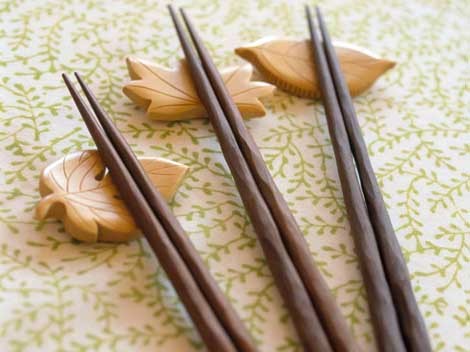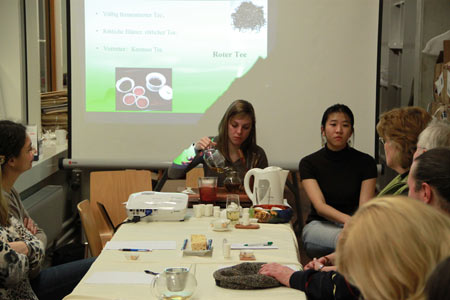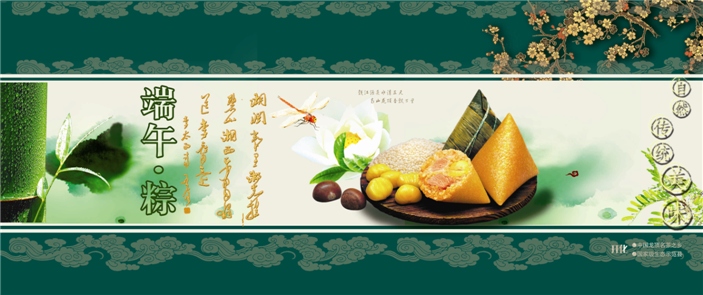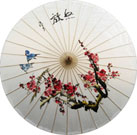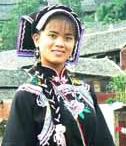Farmer Paintings
Farmer paintings are decorative paintings and printed pictures created by farmers. Traditional farmer paintings include farmers' self-printed paper horses, door paintings, god images and auspicious pictures drawn in places like the end of a kang (a heatable brick bed in North China), kitchen ranges and gable walls etc. In recent years, farmers in some areas began to draw rustic pictures on pa...
Chinese Knotting
With the advancement of civilization, Chinese people used knots for more than just fastening and wrapping. Knots were also used to record events, and some knots had purely ornamental functions. In 1980, some dedicated connoisseurs collected and arranged the decorative yet practical knots that have been passed down through the centuries in China. After studying the structures of these knots, th...
Search for A Cup Holder's Identity
A valuable porcelain cup holder that was auctioned off in Hong Kong recently has a certain amount of controversy surrounding its true origins, as Zhang Zixuan explains in this detailed report. Four months ago, at the China Guardian Hong Kong Spring Auction for 2013, a porcelain "Korean Celadon Cup Holder" had a final sale price of $HK5,175,000 ($667,575), far above the estimated price of ...
Folk Arts in Daily Life
Embroidery art in dress and adornment also embodies original Chinese Philosophy. Likening human body to the universe, the upper part (the head) is the sky, the lower part (the feet) is earth, and the middle (the pubic area) is the center. The understanding of this leads to the culture implication of Chinese dress and adornment. Many folk dress and adornment are designed as philosophy symbols. I...
Suzhou Kesi Weaving
Kesi, also called 'cut silk', is an ancient silk weaving craft that originated in Suzhou, and now exists in Suzhou and surrounding areas. Kesi refers to silk tapestry with cut designs which resemble carved artwork. With a unique silk weaving technique, Kesi uses raw silk as a warp yarn, and boiled-off silk as a weft yarn. It weaves in blocks according to the outline of the pattern using a bambo...
The Origin of Buddha Paintings
Buddha paintings can be traced back to the Sakyamuni age between the 6th to 5th centuries B.C. According to the record, after Sakyamuni became the Buddha, a rich businessman was converted. To invite the Buddha to spend the rain retreat of the monsoon period, he bought a garden in Sravasti, in which he built a bedroom, a storage room, a warehouse, a living room, a bathroom, and a pool – almost ev...
Purple-clay pottery
Purple-clay pottery is a pottery product that is between pottery and porcelain. It is a kind of famous pottery ware characterized by dense structure, unsophisticated and natural texture. The purple-clay products made of this kind of clay all reflect purple light on the surface, no matter what the color of their body is. This endows it with natural and refined texture, so it is called "purple...
Zhangzhou Puppet Head Carving
Zhangzhou puppet head carving is a special workmanship of props making for puppet show. It is one of the folk arts and crafts mainly spreading over Zhangzhou, Xiamen, Quanzhou and their surrounding areas of Fujian Province. Zhangzhou puppet carving, which originated in the Jin Dynasty and flourished in the Tang Dynasty, has enjoyed a history of nearly 2,000 years. Zhangzhou puppet feature...
Xylographic Techniques
The xylographic painting is a replication technique peculiar to China. Integrating painting, engraving and printing, it presents brushwork and ink rhymes according to the principle of water-ink permeation. It can be used not only in creating works of art with their own characteristics, but also in vividly replicating Chinese calligraphy and painting of all kinds. The xylographic painting boa...
Wu Yan Pays Respect to the Moon
This green array, which is also known as “Worshiping the Mid Autumn Moon,” is based on Zhong Lichun of the Kingdom of Qi who lived during the Warring States period. She is better known as Wu Yan, named so because Lichun came from the village of Wu Yan in Hebei Province. Wu Yan was said to be homely in appearance, but highly skilled with a zither (Chinese musical instrument) and had extraordin...
- Home
- Survey of China
- Places of interest
- Martial Arts
- Chinese Medicine
- Diet
- Art
- History of China
- Custom
Art
 more
moreChina Beijing International Diet ...
Recently, The hit CCTV documentary, A Bite of China, shown at 10:40 ...

Exhibition of Ancient Chinese Jad...
At least 8,000 years ago, Chinese ancestors discovered a beautiful...

Longmen Grottoes
The Longmen Grottoes, located near Luoyang, Henan Province, are a tr...

The 13th China Shanghai Internati...
On the evening in Shanghai, lights glittering warmly in front of n...
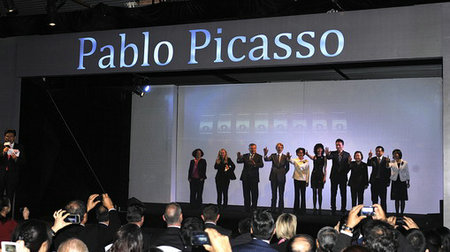
Custom
 more
moreProvinces Site
Chinese Medicine
 more
moreMartial Arts
Chinese martial arts practitioner pens 400 guide...
A Chinese martial arts practitioner in northern China's Hebei provin...
Tai Chi Master Class Held in Moscow
MOSCOW, June 15, 2016 (Xinhua) -- Students learn from Shaolin ...
Celebriting 70 years' efforts in restoring Mogao...
Work is being carried out at the restoration site of cave No 98 a...
Chinese Food Culture
Pai huang gua (smashed cucumbers)
In a report titled Smashed cucumber salad takes Manhattan, The New Y...
Jian bing (grilled savory crepe)
Jian bing, a form of grilled savory crepe with stuffing, is a popula...
General Tao's Chicken
Though name of the dish comes from general Zuo Zongtang (1812-1885...






